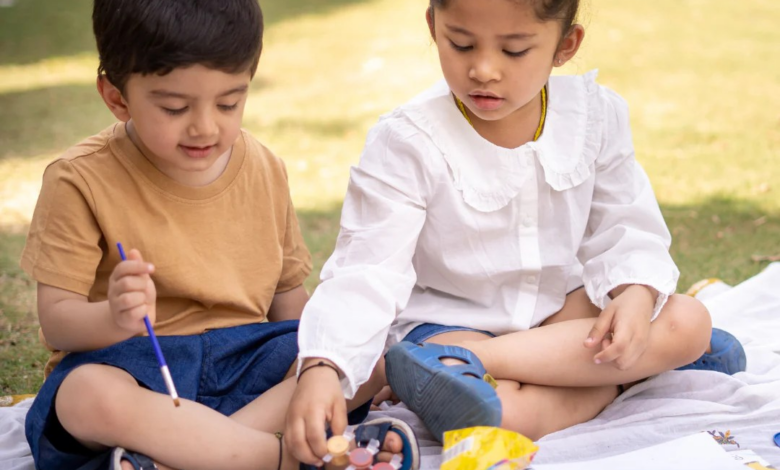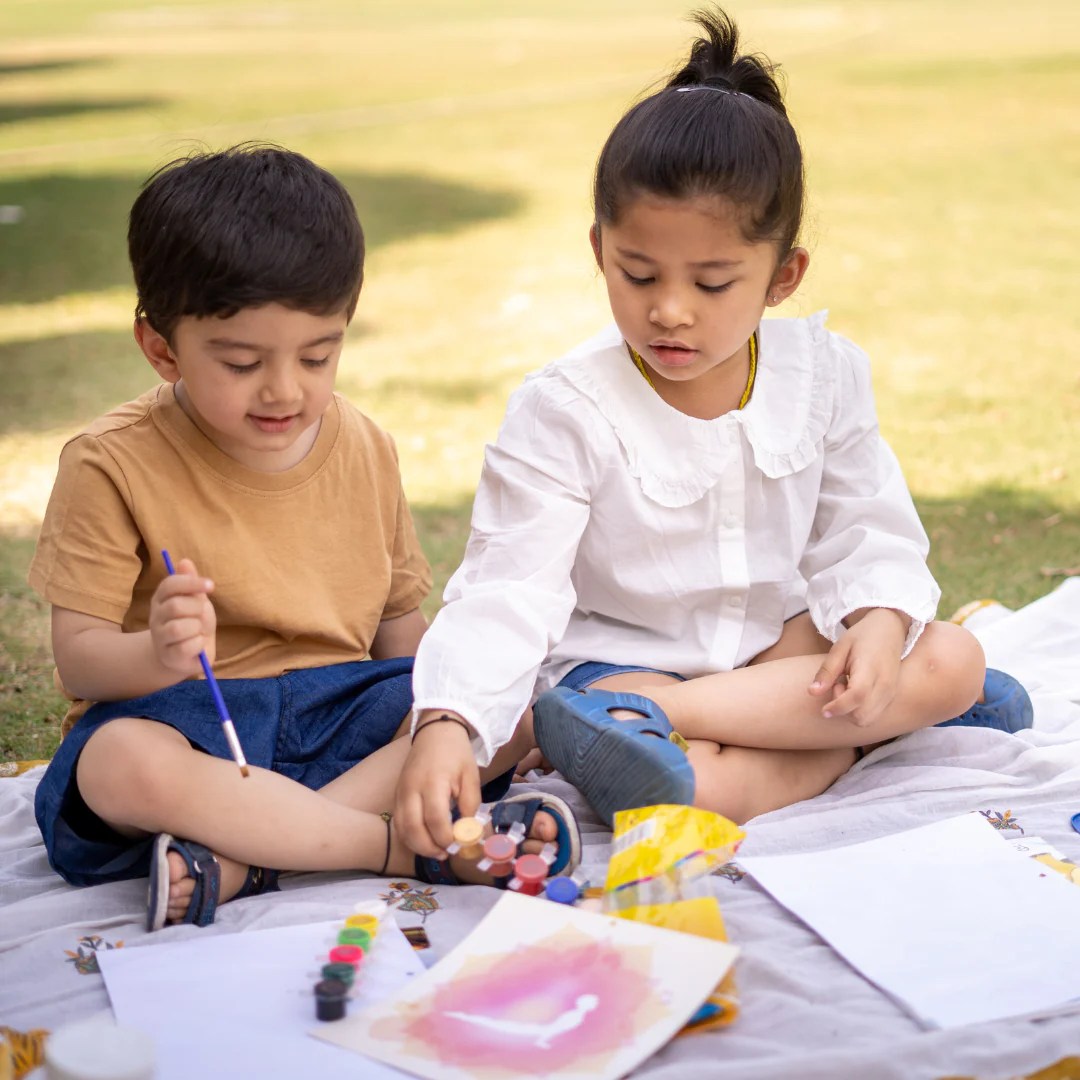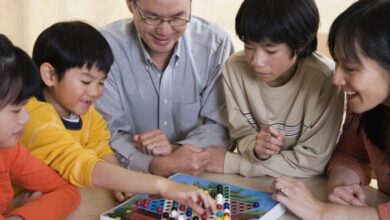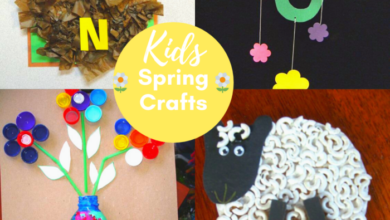
11 Items to Keep Your Kids Busy This Summer
11 Items to Keep Your Kids Busy This Summer: Summer vacation is a time for fun, relaxation, and exploration, but it can also be a time when kids get bored and restless. If you’re looking for ways to keep your children entertained and engaged during the summer months, you’ve come to the right place.
From creative activities to outdoor adventures and educational fun, this comprehensive guide provides a wealth of ideas to inspire your kids and make their summer unforgettable.
This list is designed to cater to a wide range of interests and age groups, ensuring that there’s something for everyone. Whether your child is a budding artist, an adventurous explorer, or a curious learner, these activities will provide them with opportunities to learn, grow, and make lasting memories.
Creative Activities
Summer is a time for kids to explore their creativity and express themselves. With more free time, they can delve into artistic pursuits and discover new passions. Encourage your kids to unleash their imagination and have fun with these creative activities.
Creative Activities for Kids
Here are some creative activities that encourage imagination and artistic expression:
- Drawing: Drawing is a simple yet powerful way for kids to express themselves. Provide them with paper, pencils, crayons, markers, or even paint. Encourage them to draw whatever comes to mind, from fantastical creatures to everyday objects.
- Painting: Painting allows kids to experiment with colors, textures, and techniques. You can provide them with watercolors, acrylics, or even finger paints. Encourage them to create abstract art, landscapes, portraits, or anything they can imagine.
- Sculpting: Sculpting with clay, Play-Doh, or even recycled materials is a fun way for kids to develop their spatial reasoning and fine motor skills. They can create animals, people, or abstract forms.
- Crafting: Crafting with paper, fabric, beads, or other materials can help kids develop their creativity and problem-solving skills. They can make jewelry, decorations, or even toys.
- Writing Stories: Encourage your kids to write stories, poems, or even plays. They can use their imaginations to create fantastical worlds, characters, and plots.
- Making Music: Playing an instrument, singing, or composing music can be a rewarding creative outlet. You can provide them with musical instruments, or they can use everyday objects to create their own sounds.
DIY Projects for Kids
DIY projects are a great way for kids to learn new skills and express their creativity. Here are some ideas for engaging and appropriate DIY projects for different age groups:
| Activity | Materials | Instructions | Age Range |
|---|---|---|---|
| Paper Plate Animals | Paper plates, markers, scissors, glue, googly eyes | Cut out shapes from the paper plates to create animal features, such as ears, tails, and legs. Glue the pieces together and add googly eyes. | 3-5 years old |
| Salt Dough Ornaments | Flour, salt, water, cookie cutters, paint | Mix flour, salt, and water to create a dough. Roll out the dough and use cookie cutters to create shapes. Bake the ornaments in the oven until hardened, then paint them. | 5-8 years old |
| Friendship Bracelets | Embroidery floss, scissors | Learn basic macrame knots and create colorful friendship bracelets. | 8-12 years old |
| Upcycled Bird Feeders | Plastic bottles, string, birdseed, scissors | Cut holes in a plastic bottle and decorate it. Fill the bottle with birdseed and hang it outside. | 10-14 years old |
Outdoor Adventures

Summer is the perfect time to get kids outside and exploring! Spending time in nature has countless benefits for their physical and mental well-being. It promotes physical activity, improves focus and attention, reduces stress, and fosters a connection with the natural world.
Outdoor Activities
Outdoor activities offer a wealth of opportunities for children to learn, grow, and have fun. Here are some ideas to get you started:
- Hiking: Hiking is a great way to get exercise and enjoy the scenery. Choose trails that are appropriate for your child’s age and abilities. Remember to pack plenty of water and snacks, and dress appropriately for the weather.
- Biking: Biking is another fun and healthy way to explore your surroundings. Make sure your child wears a helmet and is comfortable riding on the chosen paths.
- Swimming: Swimming is a great way to cool off on a hot day and get some exercise. Always supervise children in and around water, and make sure they wear appropriate flotation devices.
- Camping: Camping is a great way to experience nature firsthand. Pitch a tent, build a campfire, and enjoy the stars. Make sure to take proper safety precautions and be prepared for the elements.
- Gardening: Gardening is a great way to teach children about plants and the environment. Help them plant seeds, water, and care for their garden. They can also learn about different types of plants and insects.
- Exploring Nature Trails: Nature trails offer a chance to discover the wonders of the natural world. Look for birds, animals, plants, and other interesting features. Encourage your child to ask questions and learn about the environment.
Safety Tips for Outdoor Adventures, 11 items to keep your kids busy this summer
Safety should always be a top priority when planning outdoor activities with children. Here’s a table with some key safety tips:
| Activity | Location | Equipment | Safety Tips |
|---|---|---|---|
| Hiking | Well-maintained trails, appropriate for age and ability | Comfortable shoes, water, snacks, map, compass, first-aid kit | Tell someone where you’re going, stay on marked trails, be aware of weather conditions, watch for wildlife, pack extra layers of clothing |
| Biking | Bike paths, parks, quiet streets | Helmet, bike in good condition, appropriate clothing, water | Wear bright clothing, ride with the flow of traffic, obey traffic signals, be aware of your surroundings |
| Swimming | Supervised swimming areas, beaches, pools | Life jacket (for young children), appropriate swimwear, towel | Never swim alone, supervise children closely, learn CPR, be aware of water currents and depths |
| Camping | Designated campgrounds, national parks | Tent, sleeping bags, cooking equipment, first-aid kit, flashlight | Choose a safe campsite, be aware of fire hazards, keep food stored properly, protect yourself from wildlife |
| Gardening | Backyard, community garden | Gloves, gardening tools, seeds, water | Wear protective clothing, wash hands after gardening, be aware of potential hazards (e.g., pesticides) |
| Exploring Nature Trails | Nature trails, parks, forests | Comfortable shoes, water, binoculars, insect repellent | Stay on marked trails, be aware of your surroundings, watch for wildlife, leave no trace |
Educational Fun: 11 Items To Keep Your Kids Busy This Summer
Summer is a fantastic time to keep kids learning without the pressure of schoolwork. The key is to make learning fun and engaging, turning educational activities into exciting adventures.
Science Experiments
Science experiments are a great way to introduce kids to the world of STEM (Science, Technology, Engineering, and Math) in a fun and hands-on way. These experiments can be simple or complex, depending on the age and interests of your children.
- Growing Crystals: A classic experiment that teaches kids about crystal formation and the properties of different substances. You can use simple ingredients like sugar, salt, or alum to grow crystals in various shapes and sizes.
- Making a Volcano: This experiment teaches kids about chemical reactions and the power of baking soda and vinegar. The eruption of the volcano is always a crowd-pleaser.
- Building a Simple Circuit: This experiment introduces kids to the basics of electricity and circuits. You can use a battery, a light bulb, and some wires to create a simple circuit that lights up.
Coding Games
Coding games are a fun and engaging way to teach kids about computer programming and computational thinking. There are many online resources and apps that offer age-appropriate coding games for kids of all ages.
Keeping kids entertained all summer can be a challenge, but with a little creativity, it’s totally doable! From building forts to crafting masterpieces, there are endless possibilities. And if you’re looking for inspiration to spruce up their play spaces, check out these 21 stunning wall decor ideas – they’re sure to spark their imaginations and make their rooms feel extra special.
Once you’ve got the perfect backdrop, you can get back to planning all those fun summer activities!
- Scratch: A free programming language and online community where kids can create interactive stories, games, and animations. Scratch uses a block-based programming interface, making it easy for kids to learn the basics of coding.
- Code.org: A non-profit organization that provides free online coding courses for kids of all ages. Code.org offers a variety of coding games and activities that teach kids the fundamentals of computer science.
- Minecraft: A popular video game that allows players to build anything they can imagine. Minecraft also has a built-in scripting language called “Redstone,” which kids can use to create complex mechanisms and automated systems.
Building Projects
Building projects can be a great way for kids to learn about engineering, design, and problem-solving. They can also be a fun way to express their creativity and build something tangible.
- Building a Birdhouse: This project teaches kids about woodworking, measurement, and design. They can use simple tools and materials to build a birdhouse that can attract birds to their backyard.
- Creating a Model Rocket: This project teaches kids about aerodynamics, propulsion, and the principles of flight. They can build and launch their own model rockets, learning about the forces that act upon them.
- Designing a Bridge: This project teaches kids about structural engineering and the principles of load-bearing. They can design and build a bridge using simple materials like cardboard, straws, or popsicle sticks.
Reading Challenges
Reading challenges are a great way to encourage kids to read more and explore different genres. They can be simple or complex, depending on the age and interests of your children.
Summer is a time for fun and adventure, but it can also be a time for boredom. If you’re looking for ways to keep your kids busy this summer, you might want to consider crafting some quiet books. These books are perfect for rainy days or long car rides.
They can also be a great way to help your kids learn about different topics. For example, you could make a quiet book about the fall season with fun activities like counting leaves or matching pumpkins. There are many great resources online for fall quiet book patterns , and once you’ve got the patterns, all you need is some fabric and some felt.
Quiet books are just one of many creative ways to keep your kids entertained and engaged all summer long.
- Reading Bingo: This challenge encourages kids to read different types of books and complete various reading tasks. They can win prizes for completing certain squares on the bingo card.
- Summer Reading Program: Many libraries offer summer reading programs that encourage kids to read throughout the summer. These programs often include incentives like prizes, rewards, and special events.
- Book Club: Starting a book club with friends or family can be a great way to encourage reading and discuss different books. Kids can choose books they are interested in and share their thoughts and opinions with others.
Field Trips
Field trips are a fun and educational way for kids to learn about different subjects and experience new things. They can visit museums, zoos, historical sites, and science centers, among other places.
- Museums: Museums offer a wealth of information about history, art, science, and culture. They provide interactive exhibits, educational programs, and opportunities for kids to learn about different subjects in a hands-on way.
- Zoos: Zoos offer a chance for kids to learn about animals from all over the world. They can see animals in their natural habitats, learn about their behavior and conservation, and get up close and personal with some of their favorite creatures.
From building forts to planning a backyard movie night, there are plenty of ways to keep your kids entertained this summer. And don’t forget about the importance of good skin care! Teens are especially susceptible to breakouts and sun damage, so make sure they’re following a good routine, like the ones you can find on teen skin care tips.
With a little planning, you can ensure your kids have a fun and healthy summer filled with memories that will last a lifetime.
- Historical Sites: Visiting historical sites can help kids learn about the past and understand how events have shaped the present. They can explore historical buildings, learn about important figures, and gain a deeper appreciation for history.
- Science Centers: Science centers offer interactive exhibits and educational programs that teach kids about science, technology, engineering, and math. They can experiment with different scientific principles, learn about the latest technological advancements, and discover the wonders of the world around them.
Educational Fun Activities
| Activity | Learning Outcomes | Materials | Age Range |
|---|---|---|---|
| Growing Crystals | Crystal formation, properties of different substances | Sugar, salt, alum, water, jars, string | 8+ |
| Making a Volcano | Chemical reactions, baking soda and vinegar interaction | Baking soda, vinegar, water, cardboard, plastic bottle, red food coloring | 6+ |
| Building a Simple Circuit | Basics of electricity, circuits | Battery, light bulb, wires, cardboard, tape | 10+ |
| Scratch Coding | Programming basics, computational thinking | Computer, internet access, Scratch account | 8+ |
| Code.org Courses | Fundamentals of computer science | Computer, internet access | 5+ |
| Minecraft Redstone | Building and design, complex mechanisms | Minecraft game | 8+ |
| Building a Birdhouse | Woodworking, measurement, design | Wood, nails, hammer, saw, screwdriver | 10+ |
| Creating a Model Rocket | Aerodynamics, propulsion, principles of flight | Model rocket kit, launch pad, igniter | 12+ |
| Designing a Bridge | Structural engineering, load-bearing principles | Cardboard, straws, popsicle sticks, tape | 8+ |
| Reading Bingo | Reading comprehension, genre exploration | Bingo card, books | 7+ |
| Summer Reading Program | Reading comprehension, book selection | Library membership, books | 5+ |
Active Play
Active play is crucial for children’s physical, cognitive, and social development. It helps them build strong bones and muscles, improve coordination and balance, and develop essential skills like problem-solving and teamwork.
Active Play Activities
Active play activities can be categorized into different types based on their focus. Here are some examples:
- Sports:Sports like soccer, basketball, baseball, and tennis provide structured physical activity and teach teamwork, strategy, and discipline.
- Dance Classes:Dance classes, such as ballet, jazz, and hip-hop, enhance coordination, flexibility, and rhythm. They also promote creativity and self-expression.
- Gymnastics:Gymnastics develops strength, flexibility, and agility. It also teaches discipline, focus, and body awareness.
- Martial Arts:Martial arts like karate, taekwondo, and judo teach self-defense skills, discipline, and respect. They also improve coordination and strength.
- Outdoor Games:Outdoor games like tag, hide-and-seek, and hopscotch encourage physical activity and social interaction. They also foster imagination and creativity.
Safety Precautions for Active Play
Safety is paramount during active play. Here’s a table highlighting key safety precautions for various activities:
| Activity | Skill Development | Equipment | Safety Precautions |
|---|---|---|---|
| Soccer | Coordination, teamwork, strategy | Soccer ball, cleats, shin guards | Wear appropriate footwear, stay hydrated, avoid playing on uneven surfaces, use shin guards, follow rules of the game. |
| Dance Classes | Coordination, flexibility, rhythm | Dance shoes, appropriate attire | Warm up properly, listen to instructors, wear appropriate footwear, avoid overexertion. |
| Gymnastics | Strength, flexibility, agility | Gymnastics equipment, mats | Use proper form, practice on soft surfaces, follow instructor’s guidance, wear appropriate clothing. |
| Martial Arts | Self-defense, discipline, respect | Martial arts uniform, protective gear | Use proper technique, wear protective gear, follow instructor’s guidance, practice on safe surfaces. |
| Outdoor Games | Physical activity, social interaction | No specific equipment required | Play in safe areas, supervise children, avoid playing near roads or water bodies, be aware of surroundings. |
Social Connections
Summer is a fantastic time for kids to strengthen their social skills and build lasting friendships. With more free time and opportunities for outdoor activities, kids can connect with others in various ways. Encourage your child to engage in social activities that spark their interests and promote positive interactions.
Summer Activities for Social Interaction
Summer offers a wide range of opportunities for kids to interact with others. Here are some ideas:
- Community Events: Attending local festivals, concerts, parades, or farmers markets can be a great way for kids to meet new people and experience the community together.
- Playdates: Organize playdates with friends or neighbors, allowing kids to play games, share toys, and build relationships.
- Volunteer Opportunities: Encourage kids to volunteer at a local animal shelter, library, or community garden. Volunteering fosters a sense of purpose and responsibility while providing opportunities for social interaction.
- Summer Camps: Summer camps offer structured activities and opportunities for kids to connect with peers who share similar interests. Camps can range from sports and arts to science and technology, providing a diverse range of options.
Benefits of Social Interaction for Kids
Social interaction is crucial for kids’ development. It helps them:
- Develop social skills: Kids learn to communicate effectively, share, cooperate, and resolve conflicts through social interaction.
- Build self-confidence: Positive social experiences boost kids’ self-esteem and confidence in their abilities.
- Learn about different perspectives: Interacting with others exposes kids to different viewpoints, values, and cultures, broadening their understanding of the world.
- Improve emotional intelligence: Social interaction helps kids develop empathy, understanding, and the ability to manage their emotions.






